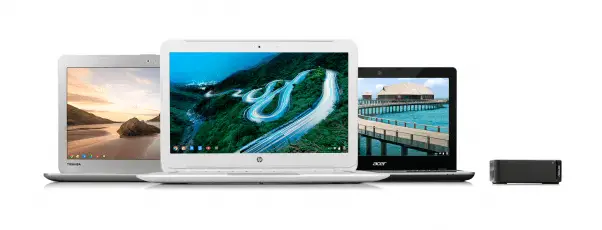
 The Chromebook space is in a bit of a pigeon hole right now. As manufacturers slowly begin to embrace the idea of Chrome OS and Chromebooks, they all seem to be attracted to the same perk: low-cost machines that still perform well.
The Chromebook space is in a bit of a pigeon hole right now. As manufacturers slowly begin to embrace the idea of Chrome OS and Chromebooks, they all seem to be attracted to the same perk: low-cost machines that still perform well.
In all honesty, that is a part of the Chromebook world that I really like. The ability to marry simple, less-expensive inner hardware with a light and productive OS is really a wonderful feature of the Chromebook. For consumers it means having a really inexpensive machine without losing out on performance. For manufacturers it means using cheaper parts to maximize profits.
Everyone wins, right?
Theoretically, yes. But in practice what seems to be happening currently in the Chromebook space is a race to the bottom. Since the debut of the Samsung Series 3 Chromebook, the game has been to see how low the price can get while not losing out on performance. And, to be fair, that price has gone quite low. At $199, the Acer C720 has pushed that bargain-basement farther than any and has created an “almost disposable” price for consumers. At these prices, no one can really argue too much about the shortcomings of Chromebooks in general. And for those who clamor about buying a Windows laptop in this price range, I’d challenge someone to show me a $199, new laptop that comes close to the speed of the Acer C720.
I’d doubt I’ll see any takers on that challenge.
While this cheaper-is-better approach is working in bringing more and more people into the Chromebook fold, there is slowly forming a real hole in the ecosystem. And every day I hear more and more people asking for this hole to be filled.
The mid-range Chromebook. Let me explain why this could be a huge hit.
While the low price tag attracts people, high quality can do the same thing. Keep in mind, last year the aforementioned theory may not have worked. But now, as the user base is growing along with public mind-share, the time is right for a device that aims a bit higher than “lowest possible price.” Think about it for a second: 2013 proved that a Celeron processor is enough to really drive Chrome OS. It also proved that it could do it with awesome battery life. And, coupled with 4GB of RAM, there really is no slow down in these machines. Those are pretty cheap internal specs. Couple that with the fact that a 16GB – 32GB SSD is acceptable and you have internals that can stay cheap and still have plenty of power. And these specs are the norm in devices that cost anywhere from $199 to $299. The HP Chromebook 14 is a great example of getting the internals, keyboard, touchpad and ports right while staying in this price range.
Let’s talk externals, now. So far, we’ve seen some really beautiful external hardware. We just haven’t seen it all together in one place. Look at the HP Chromebook 11. Thoughtful design, delightful keyboard and touchpad, innovative speakers, and a great display. The internals are a failure, but the external piece is there. And it’s less than $299.
What would happen if we could get a Chromebook with the thoughtful design of the HP 11, the touch features of the C720P, the screen resolution of the rumored Samsung Chromebook successor, and the internals of the HP Chromebook 14? The spec sheet would look something like this:
- 2 size options (11.6″ and 13″-14″)
- IPS Touch Display with high brightness
- 2MP Front Facing Camera
- Quality Plastics/Aluminum/Combo of both
- Spacious Keyboard and Accurate/Large Touchpad
- Backlit Keyboard
- Great Speakers
- Plenty of full sized ports
- Slim/Light Build
- $400 – $600 Price tag
Notice what all these specs focus on: the exterior hardware. My theory is, with the HP 11 Chromebook, Google and HP chose to focus on the external hardware and really did a fine job. Other than screen resolution, brightness, and port selection, the HP 11 got a lot of the outer parts right. But in order to keep the price down (there’s that pigeon hole again) they had to really sacrifice the internal hardware. I stated in my head-to-head comparison of the HP Chromebook 11 and HP Chromebook 14 that if the HP 11 had a larger sibling with the Haswell chip inside and simply a 1600×900 resolution, that would be an amazing device I wouldn’t balk at paying a bit of a premium for.
My hope is that with 2013 bringing Chromebooks into the light a bit, 2014 can be the year that manufacturers begin thinking about how to be unique in this space. As excited as I am about the Toshiba Chromebook, it’s already beginning to feel a bit “been there, done that.” Here’s hoping we see some differentiation and inspired design sooner rather than later.
[photo credit: Google]

Leave a Reply
You must be logged in to post a comment.